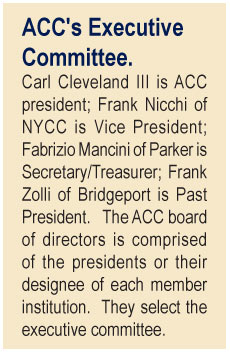With over 175 professional athletes under care (as well as the CEO’s of major corporations such as Tupperware and Harris Corp.), Dr. Gerry Mattia shares his secrets to success.
Gerald R. Mattia, B.S., D.C., has thirty-one years of experience as a chiropractic physician. He earned his chiropractic degree from New York Chiropractic College in 1977, and has been a member of the International Chiropractic Association for more than thirty years and a member of the Board of Directors of the ICA for twenty years. He was named Chiropractor of the Year and Sports Chiropractor of the Year and was appointed to the Board of Chiropractic Examiners by the Governor of New Jersey. He is presently serving as President of ICA’s Council on Fitness and Sports Health Science.
Dr. Mattia describes his clinic as high tech where the adjustments are the core procedure in the office with a good percentage of the practice geared toward maintenance chiropractic care. In his practice, he utilizes several chiropractic techniques, including decompression therapy, specializing in disc problems in the low back and neck. He travels the country speaking on this subject.
Dr. Mattia practices at Mattia Chiropractic Wellness Center with his wife, Paulette Mattia, D.C., and their nephew Brian Moriarty, D.C.
In an interview with The American Chiropractor (TAC), Dr. Gerry Mattia talks about his history and practice particulars that have helped him achieve such a successful practice.
TAC: What was it about chiropractic that got you interested in the profession?
Mattia: Chiropractic saved my life. I was born with Aortic Stenosis of the heart. My parents were told that I would live to about the age of seventeen. The first seventeen years of my life, I spent many hours in St. Michaels Hospital in Newark, NJ.
In 1968, doctors wanted to perform open heart surgery on me; the success rate at that time was one percent. My cardiologist told my mother to cancel the operation. He thought, at least she would have her son another six months.
I also had allergies. Our neighbor told my mother that her son went to a chiropractor and his allergies went away.
 I started chiropractic care three times a week for six months with no results. Finally, my allergies cleared. I was still alive and feeling better than I had in the past. I kept going to the chiropractor. A year later I had another cardiac catherization, and the results confused the cardiologist because my aortic valve stopped closing. I knew that day that I was going to be a chiropractor. Chiropractic saved my life.
I started chiropractic care three times a week for six months with no results. Finally, my allergies cleared. I was still alive and feeling better than I had in the past. I kept going to the chiropractor. A year later I had another cardiac catherization, and the results confused the cardiologist because my aortic valve stopped closing. I knew that day that I was going to be a chiropractor. Chiropractic saved my life.
TAC: What type of patient makes up the majority of your practice?
Mattia: The professional athlete is a major part of my office as is chiropractic maintenance care for all ages. Over the last couple of years, we’ve developed a reputation in spinal decompression. We now have patients flying in from all over the world to have decompression on their lower back and cervical region. Most of our patients, today, have some sort of disc problem. We specialize in difficult cases.
TAC: Is Sports Chiropractic something you envisioned yourself doing when you started?
Mattia: When I first went into practice, the last thing on my mind was sports chiropractic. I was interested in becoming successful. Back in 1977, chiropractors were not well accepted. My partner, Dr. Susan Guarino, and I wanted to change that. We did patient education classes every week and rented a hall once a month to educate people in chiropractic. The athletes came later in the practice. I never forgot, however, what it was that got me into chiropractic in the first place, and for the first twenty-five years of practice, I had a policy in which I’d treat all patients fifteen years old and younger at no charge. That was my way of giving back.
TAC: Could you tell our readers how exactly you have been able to tap into the professional athlete market so effectively?
Mattia: I have a passion for sports. I enjoy watching and playing sports. I never tried to get professional athletes as patients. I tried to be the best in chiropractic. I always worked on referrals. It happened one referral of an athlete lead to another, to another, to another, which has led now to several hundred professional athletes, from Major League Baseball, NFL, NBA, PGA, LPGA, European Golfers, to professional wake boarders. This is great for our profession that athletes such as Johnny Damon, Duane Clemons, Barry Larkin, and Trevor Immelman, 2008 Masters Champion, recognize our profession and its value to their health. But, let us not forget the value of every mother, child and father that has chosen chiropractic as their choice of health care. Those are the people that make our profession successful.
TAC: Do you prefer one technique over another? If so, why?
Mattia: All techniques work, but not all patients accept each technique the same. Diversified, Gonstead, and Thompson Terminal Point have been used the most. For patients who come in with an antalgic lean, SOT Cat 3 is used. Activator and Toggle Recoil have been used. The techniques which allow me to put my hands on patients have been used the most. An innate sense instills in me that we’re on right path to their health.
TAC: Do you see value in Spinal Decompression?
Mattia: When Vax-D came out in the early 1990’s, I saw little value because of the low success rate. With the development of new decompression companies, like other technologies, as time passes results have improved. Using decompression for the past several years led me, along with Dr. Eric Kaplan, to develop protocols for greater results. With our success rate on bulging, protruded, herniated and degenerative discs, my practice has drastically changed. We have patients fly in from all over the world for decompression. Right now, our farthest traveled patient has come from New Zealand. With a favorable success rate using decompression, we have treated people from England, Spain, Australia, South Africa, Germany, Netherlands, India, France, and Italy.
Decompression, along with the adjustment, has also given us an edge with athletes.
TAC: Is there any mentor or one specific person that has really shaped you to be the doctor that you’ve become?
Mattia: First, I would have to say my parents. They were my teachers in life. They inspired me to always do my best, taught me right from wrong but, most of all, they instilled in me a passion to help other people. My parents gave me values. Values are everything.
In chiropractic, Dr. Tom Whitehorne made me understand the philosophy and principles of chiropractic. His passion for chiropractic was great.
 Next, was Dr. Bill Remling. I worked for Dr. Remling when I was a student. He finished his office hours late every night. He would then stay and teach me techniques and talk over office situations and how to handle them, so I could learn. I thank God every day that He sent these people into my life.
Next, was Dr. Bill Remling. I worked for Dr. Remling when I was a student. He finished his office hours late every night. He would then stay and teach me techniques and talk over office situations and how to handle them, so I could learn. I thank God every day that He sent these people into my life.
TAC: What are you plans for the future?
Mattia: I would like to develop equipment that will aid chiropractic practice. I believe we have to embrace technology yet keep the chiropractic adjustment as the core of the practice. I presently work part time four afternoons a week. Over the next three years, my nephew, Dr. Brian Moriarty, will take over more and more of the operations of the office. He has been working with us since he graduated and has been welcomed by our patients.
Our patients have come from different areas of the world to experience our office. I would like to travel with my wife, Dr. Paulette Mattia, and visit some of the places they have come from. I would like to speak on chiropractic and share my story.
TAC: What is the most common problem you see among chiropractors today?
Mattia: I love chiropractors and chiropractic. What troubles me is the lack of confidence some of the chiropractors have today and what chiropractic can do for the world. There needs to be a passion for the profession. Too many treat it as a job. Unfortunately, the insurance industry is not favorable to chiropractic, so we cannot base our practices anymore on reimbursement. Health care is turning back to the responsibility of the consumer. More and more chiropractors must become non-participants in reimbursement plans or they will not have the freedom to practice as they choose.
TAC: What is the biggest problem or challenge you see in the chiropractic profession today?
Mattia: Doctors of chiropractic embracing technologies and becoming independent of the reimbursement networks and insurance industry. Patients are willing to pay for something they believe to have value.
TAC: Can you think of one change that a chiropractor can do to significantly impact his/her practice’s growth immediately?
Mattia: Market your office and your profession. Most other professions and industries do this. We have done it with spinal decompression in our area. We have used infomercials with professional athletes. We have a valuable commodity to offer people. We must market our value.
TAC: Do you have any recommended marketing strategies that chiropractors can do to attract new patients and to keep current patients?
Mattia: Get out in your community. Be the doctor that everyone is talking about. Use marketing to your advantage. Dare to be different. Make sure your skills as a chiropractor are fine tuned.
Just as an athlete trains and practices before an event, we must prepare to take care of our patients. Believe what you do for your patients cannot be done anywhere else.
TAC: Dr. Mattia, I understand that you’re very hands on with the equipment utilized in your practice and that you’ve assisted with the development of several different tools. Can you tell us about that?
Mattia: Yes. Over the years, while looking for the right tools to better serve my patients, like many chiropractors, I’d find that sometimes the right tool just didn’t exist yet. While working with professional athletes, I’d find that doing the right thing isn’t enough, but you need to have the right technology and documentation to show the clients just how much they are improving with care. Athletes are goal-oriented people and like to have a plan from start to finish to show their progress. This is what led to my work with K-Health in helping to develop the R.O.M. device that I use on my athletes. With athletes, of course, rehabilitation and exercise are important components, which is why I do rehab geared at the core muscles and connective tissue with protocols and equipment which I helped to develop. My most recent involvement has been with Disc Force for decompression therapy. I got together with the engineers of the Disc Force company and they were very receptive to making changes to improve the equipment for better patient needs and standards. From my experience, working with my own decompression tables, it is an undeniably beneficial treatment method for spinal conditions which has helped me with patients of all kinds, not only athletes, but CEOs, and all patients.
So, maybe I’m a bit of an overachiever, but I believe in being the change you want to see in the world. If the tool doesn’t exist, then make it! If you don’t have the time to make your own tools, then at least look within chiropractic to build off the work of other chiropractors before you, so you don’t have to start from scratch.
TAC: Where do you see the future of chiropractic headed?
Mattia: I wish I could look into a crystal ball and see where chiropractic is headed. With the healthcare industry changing, I cannot really say. However, with the value chiropractic has for its services and results we get for our services, the public will be ready to pay. The reimbursement system has changed.
Will socialized healthcare be part of our future? I never understood how healthcare could be part of the government. Medicare is not the panacea for seniors that it was envisioned to be. Chiropractic has withstood many challenges for over 100 years.
TAC: Thank you, Dr. Mattia.
To contact Dr. Gerry Mattia, you may call his clinic at 407-909-4788 or email him at [email protected].
![]() Acom
Acom Chirotouch
Chirotouch  E-Z Bis, Inc.
E-Z Bis, Inc.  Eon Systems
Eon Systems InPhase Technology Group
InPhase Technology Group  Life Systems Software
Life Systems Software TGI Solutions
TGI Solutions  JTECH Medical
JTECH Medical  TyQ Corporation
TyQ Corporation  Future Health
Future Health  Practice Perfect
Practice Perfect EWDC
EWDC













 Dr. Eric Plasker is the founder of The Family Practice, a marketing and training company for chiropractors, and the author of the international best selling book, The 100 Year Lifestyle, and the creator of The 100 Year Lifestyle Certification Program. He can be reached at 1-866-532-3327 or
Dr. Eric Plasker is the founder of The Family Practice, a marketing and training company for chiropractors, and the author of the international best selling book, The 100 Year Lifestyle, and the creator of The 100 Year Lifestyle Certification Program. He can be reached at 1-866-532-3327 or 


 Dr. Michael Schneider has been a practicing chiropractor for 27 years. He has a PhD in rehabilitation science from the University of Pittsburgh where he presently is an Assistant Professor in the School of Health and Rehabilitation Sciences. Dr. Schneider has obtained a five-year Federal grant from the National Institutes of Health to conduct chiropractic research on low back pain
Dr. Michael Schneider has been a practicing chiropractor for 27 years. He has a PhD in rehabilitation science from the University of Pittsburgh where he presently is an Assistant Professor in the School of Health and Rehabilitation Sciences. Dr. Schneider has obtained a five-year Federal grant from the National Institutes of Health to conduct chiropractic research on low back pain Dr. Seaman is an Adjunct Associate Professor at Palmer College of Chiropractic Florida, has a part-time practice in Ormond Beach, and is the Clinical Education Director for Anabolic Laboratories. He has written numerous articles on the treatment options for chronic pain patients, with a focus on nutritional management. He can be reached at
Dr. Seaman is an Adjunct Associate Professor at Palmer College of Chiropractic Florida, has a part-time practice in Ormond Beach, and is the Clinical Education Director for Anabolic Laboratories. He has written numerous articles on the treatment options for chronic pain patients, with a focus on nutritional management. He can be reached at 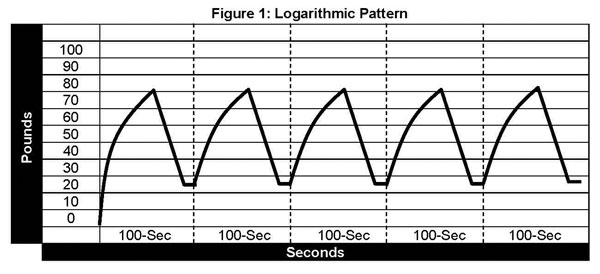


 David Bass, D.C., LAc, DOM, invented the articulating ROM Antalgic-Trak and is current President of Spinetronics the manufacturer of Antalgic-Trak. You can reach him at
David Bass, D.C., LAc, DOM, invented the articulating ROM Antalgic-Trak and is current President of Spinetronics the manufacturer of Antalgic-Trak. You can reach him at 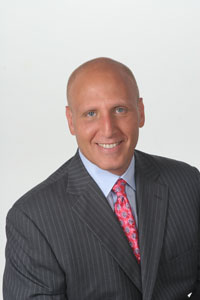
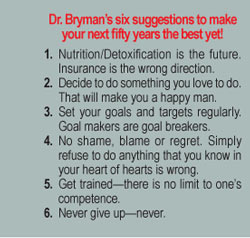

 “I questioned both patients. One ate only really good foods. The other was on a diet of soda, candy, cake, and ice cream, etc. I thought, no wonder no results. So I got the sugared-up patient to gradually cut the sugar out of his diet, and the positive results came right alongside.”
“I questioned both patients. One ate only really good foods. The other was on a diet of soda, candy, cake, and ice cream, etc. I thought, no wonder no results. So I got the sugared-up patient to gradually cut the sugar out of his diet, and the positive results came right alongside.” 
 “Additionally, due to Nutrition Response Testing’s workable technology, doctors in training are continually improving on the healing processes through nutritional handlings. For example, on a visit by visit basis, one can handle metal detox and chemical detoxification to verify detoxification, not only if it is happening but at what rate and speed, for complete controlled handling with no adverse reaction.”
“Additionally, due to Nutrition Response Testing’s workable technology, doctors in training are continually improving on the healing processes through nutritional handlings. For example, on a visit by visit basis, one can handle metal detox and chemical detoxification to verify detoxification, not only if it is happening but at what rate and speed, for complete controlled handling with no adverse reaction.” 

 I started chiropractic care three times a week for six months with no results. Finally, my allergies cleared. I was still alive and feeling better than I had in the past. I kept going to the chiropractor. A year later I had another cardiac catherization, and the results confused the cardiologist because my aortic valve stopped closing. I knew that day that I was going to be a chiropractor. Chiropractic saved my life.
I started chiropractic care three times a week for six months with no results. Finally, my allergies cleared. I was still alive and feeling better than I had in the past. I kept going to the chiropractor. A year later I had another cardiac catherization, and the results confused the cardiologist because my aortic valve stopped closing. I knew that day that I was going to be a chiropractor. Chiropractic saved my life.
 Next, was Dr. Bill Remling. I worked for Dr. Remling when I was a student. He finished his office hours late every night. He would then stay and teach me techniques and talk over office situations and how to handle them, so I could learn. I thank God every day that He sent these people into my life.
Next, was Dr. Bill Remling. I worked for Dr. Remling when I was a student. He finished his office hours late every night. He would then stay and teach me techniques and talk over office situations and how to handle them, so I could learn. I thank God every day that He sent these people into my life.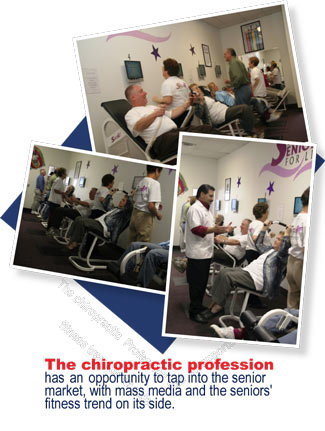

 When asking for referrals for chiropractic care, most patients have to think of someone they know that is suffering from some kind of health problem that they think chiropractic can help, usually neck or back pain. Asking for referrals for my program is a snap. All the seniors they know need to exercise and what better place to do it than in my office with their friends? Lifetime chiropractic care has never been easier to promote, because everyone already accepts that they should exercise for the rest of their life. Since the health benefits of exercise are so universally accepted, about half the new people that come in for this program have never been under chiropractic care before. I am finally tapping into that 90 percent of the population that doesn’t utilize chiropractic services.
When asking for referrals for chiropractic care, most patients have to think of someone they know that is suffering from some kind of health problem that they think chiropractic can help, usually neck or back pain. Asking for referrals for my program is a snap. All the seniors they know need to exercise and what better place to do it than in my office with their friends? Lifetime chiropractic care has never been easier to promote, because everyone already accepts that they should exercise for the rest of their life. Since the health benefits of exercise are so universally accepted, about half the new people that come in for this program have never been under chiropractic care before. I am finally tapping into that 90 percent of the population that doesn’t utilize chiropractic services. 